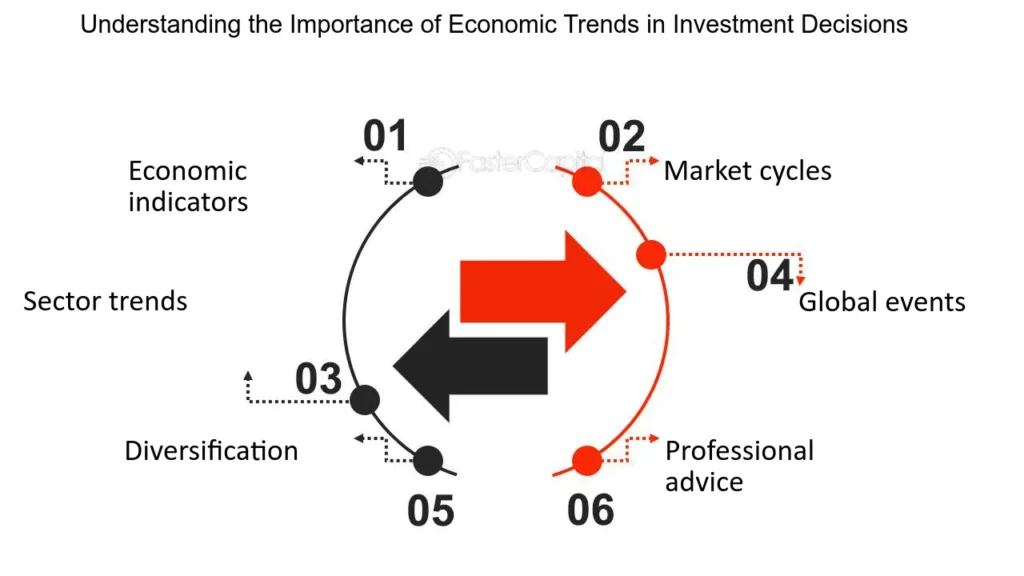Introduction: Why Breaking Down the Latest Economic Trends Matters
The global economy is ever-evolving, influenced by a mix of technological advancements, geopolitical shifts, and societal changes. Understanding these dynamics is essential for businesses, policymakers, and individuals seeking to navigate uncertainties and capitalize on opportunities. In this article, we’ll focus on breaking down the latest economic trends, exploring their implicationsahead. By the end, you’ll have a clearer understanding of where the global economy is heading and how you can adapt to these trends effectively.

The Importance of Tracking Economic Trends
Keeping up with economic trends is not just for financial analysts or policymakers. Everyone, from small business owners to everyday consumers, can benefit from understanding the economic forces at play. Here’s why:
- Informed Decision-Making: Understanding trends helps businesses plan for the future, allocate resources, and manage risks.
- Policy Formulation: Governments rely on economic data to craft policies that address inflation, unemployment, or economic inequality.
- Personal Finance Planning: For individuals, knowing whether inflation is rising or interest rates are falling can guide investment decisions.
Breaking down the latest economic trends equips us with the knowledge to anticipate challenges and seize opportunities.
Key Economic Trends Shaping 2024
1. The Continued Impact of Inflation
Inflation remains a dominant force shaping the global economy. Over the past year, central banks worldwide have implemented aggressive monetary policies to combat rising prices. While inflation rates have stabilized in some regions, they still pose challenges.
- Consumer Impact: Rising prices affect purchasing power, especially for essential goods and services.
- Business Costs: Businesses face higher input costs, often leading to increased prices for consumers.
- Policy Responses: Central banks are balancing inflation control with economic growth, using interest rate adjustments as a primary tool.
2. Global Supply Chain Resilience
Post-pandemic disruptions and geopolitical tensions have highlighted vulnerabilities in global supply chains. Companies are now prioritizing resilience over efficiency.
- Nearshoring Trends: Businesses are relocating operations closer to home to reduce dependency on overseas suppliers.
- Technology in Supply Chains: Advanced technologies like blockchain and AI are enhancing transparency and efficiency.
- Geopolitical Factors: Trade restrictions and sanctions continue to reshape global supply dynamics.
3. The Digital Economy’s Rapid Expansion
The digital economy is no longer just a sector—it’s a driving force behind global growth. Digital transformation initiatives are reshaping industries, from retail to healthcare.
- E-Commerce Growth: Online shopping continues to expand, with new markets embracing digital platforms.
- Workplace Transformation: Hybrid and remote work models are prompting investments in digital tools.
- Financial Technology (FinTech): Digital payment systems and blockchain technologies are revolutionizing financial services.
4. Green Economy Momentum
Sustainability is becoming a core focus of economic development. Governments, businesses, and consumers are driving the shift toward greener practices.
- Renewable Energy Investment: Solar, wind, and other renewable energy sources are attracting significant funding.
- Carbon Neutral Goals: Companies are setting ambitious targets to reduce carbon footprints.
- Consumer Preferences: A growing number of consumers are choosing environmentally-friendly products.
Regional Trends to Watch
Economic trends vary across regions, influenced by local policies, cultural dynamics, and market conditions.
1. North America
- Strong focus on technology innovation and infrastructure investments.
- Continued efforts to address labor market imbalances.
2. Europe
- Energy challenges due to geopolitical conflicts and the transition to renewables.
- Rising emphasis on digital sovereignty and technological self-reliance.
3. Asia-Pacific
- Rapid economic growth in emerging markets like India and Vietnam.
- Leadership in technological manufacturing and renewable energy adoption.
Challenges in Breaking Down Economic Trends
While understanding economic trends is crucial, it’s not without challenges:
- Data Overload: With vast amounts of information available, discerning credible sources is a hurdle.
- Uncertainty: Unexpected events like natural disasters or political conflicts can derail trends.
- Complex Interactions: Economic factors are interlinked, making it difficult to isolate specific causes or effects.
Strategies to Stay Ahead of Economic Trends
1. Leverage Technology
Use tools like economic forecasting software and AI-driven analytics to gain insights into trends.
2. Engage Experts
Consult economists, industry analysts, and business advisors for informed perspectives.
3. Diversify Investments
Spread financial risks by investing across different asset classes and geographies.
Conclusion: Adapting to Economic Change
Breaking down the latest economic trends offers invaluable insights into our rapidly changing world. Whether it’s understanding inflation’s impact or navigating the shift toward a green economy, staying informed is the key to thriving in uncertain times. Embrace these trends, adapt your strategies, and position yourself for success in 2024 and beyond.


